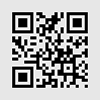
Measuring images
Measurement precision
How precise the measurement is, depends on the X/Y-calibration and the
image's current zoom factor.
The X/Y-calibration defines the width and height of the sample area that is
represented by one pixel. For example, it could be that one pixel displays a
sample area of 10 µm x 10 µm. A pixel is the smallest image structure that can
be measured. For this reason, the maximum measurement precision where this
example is concerned, is 10 µm.
Influence of the X/Y-
calibration
The zoom factor tells you how large the image will be displayed on your monitor.
With a zoom factor of 100%, one pixel on the monitor equals exactly one pixel in
the image. With a zoom factor of 50%, one pixel on the monitor equals 2 x 2
pixels in the image. When you make a measurement, you should use the zoom
factor 100% whenever possible. Then you will achieve a maximum of
measurement precision. Should the zoom factor 100% not be possible, because
the image area you want to measure can't then be completely seen, choose the
largest possible zoom factor under 100%.
Click here if you wish to change an image's zoom factor.
Influence of the zoom
factor
00150
9.1. Measuring images
Your software offers a wide range of measurement functions. They enable you to
quickly count objects and measure segments and areas.
The following step-by-step instructions present the measurement functions to you
by way of several examples.
Measuring image objects interactively
You want to measure the diameter of some cells.
To do this, load a suitable image, or acquire one.
Subsequently edit the measurement. Delete some of the measurements you've
made. Enter the results in a MS-Excel sheet.
Task
1. If necessary, use the
View > Tool Windows > Measurement and ROI
command to have the
Measurement and ROI
tool window displayed.
You'll find the tool window at the lower edge of the user interface. It's
possible that it may be covered by the
Count and Measure Results
tool
window. Click the
Measurement and ROI
tab at the bottom of the user
interface, to bring the tool window into the foreground.
2. Acquire an image or load one.
During the installation of your software some sample images have been
installed, too. Regarding the information as to where the example images are
located, please refer to the online help. You can follow these step-by-step
instructions when you use the exemplary image "Neurons.tif".
Loading an image
65
